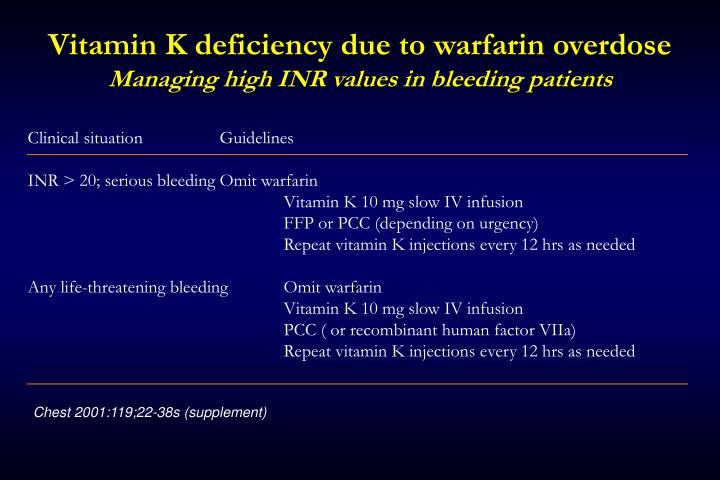

Vitamin K antagonists inhibit the production of vitamin K-related factors and require a minimum of five days overlap with parenteral anticoagulants, whereas direct oral anticoagulants directly inhibit factor II or factor Xa, providing more immediate anticoagulation.

Vitamin K antagonists are recommended for patients with mechanical valves and valvular atrial fibrillation.

Direct oral anticoagulants are first-line agents for eligible patients for treating venous thromboembolism and preventing stroke in those with nonvalvular atrial fibrillation. Vitamin K is less effective for over-anticoagulation after treatment with acenocoumarol or phenprocoumon than after treatment with warfarin.Anticoagulation therapy is recommended for preventing, treating, and reducing the recurrence of venous thromboembolism, and preventing stroke in persons with atrial fibrillation. Overcorrection of the INR or resistance to warfarin is unlikely if the above doses of vitamin K are used. The risk of bleeding increases dramatically when the INR exceeds 4.0-6.0, although the absolute risk of bleeding remains fairly low, 10.0, a dose of 5mg may be more appropriate. In over-anticoagulated patients, vitamin K aims at rapid lowering of the international normalized ratio (INR) into a safe range to reduce the risk of major bleeding and therefore improving patient outcome without exposing the patient to the risk of thromboembolism due to overcorrection, resistance to AVK, or an allergic reaction to the medication. For reversal of excessive anticoagulation by warfarin, AVK withdrawal, oral or parenteral vitamin K administration, prothrombin complex or fresh frozen plasma may be used, depending on the excess of anticoagulation, the existence and site of active bleeding, patient characteristics and the indication for AVK. However, questions persist about the risks and management of over-anticoagulation. Anticoagulation with antivitamin K (AVK) is very effective for primary and secondary prevention of thromboembolic events.


 0 kommentar(er)
0 kommentar(er)
